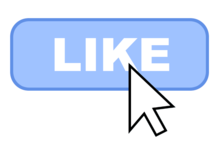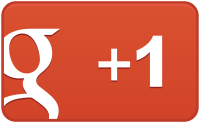
StumbleUpon was a browser extension, toolbar, and mobile app with a "Stumble!" button that, when pushed, opened a semi-random website or video that matched the user's interests, similar to a random web search engine. Users were able to filter results by type of content and were able to discuss such webpages via virtual communities and to rate such webpages via like buttons. StumbleUpon was shut down in June 2018.

YouTube is an American online video sharing platform owned by Google. Accessible worldwide, YouTube launched on February 14, 2005, by Steve Chen, Chad Hurley, and Jawed Karim, three former employees of PayPal. Headquartered in San Bruno, California, United States, it is the second most visited website in the world, after Google Search. YouTube has more than 2.5 billion monthly users, who collectively watch more than one billion hours of videos every day. As of May 2019, videos were being uploaded to the platform at a rate of more than 500 hours of content per minute, and as of 2021, there were approximately 14 billion videos in total.
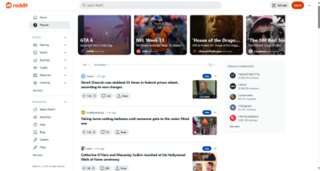
Reddit is an American social news aggregation, content rating, and forum social network. Registered users submit content to the site such as links, text posts, images, and videos, which are then voted up or down by other members. Posts are organized by subject into user-created boards called "communities" or "subreddits". Submissions with more upvotes appear towards the top of their subreddit and, if they receive enough upvotes, ultimately on the site's front page. Reddit administrators moderate the communities. Moderation is also conducted by community-specific moderators, who are not Reddit employees. It is operated by Reddit, Inc., based in San Francisco.
A social news website is a website that features user-posted stories. Such stories are ranked based on popularity, as voted on by other users of the site or by website administrators. Users typically comment online on the news posts and these comments may also be ranked in popularity. Since their emergence with the birth of Web 2.0, social news sites have been used to link many types of information, including news, humor, support, and discussion. All such websites allow the users to submit content and each site differs in how the content is moderated. On the Slashdot and Fark websites, administrators decide which articles are selected for the front page. On Reddit and Digg, the articles that get the most votes from the community of users will make it to the front page. Many social news websites also feature an online comment system, where users discuss the issues raised in an article. Some of these sites have also applied their voting system to the comments, so that the most popular comments are displayed first. Some social news websites also have a social networking service, in that users can set up a user profile and follow other users' online activity on the website.

Digg, stylized in lowercase as digg, is an American news aggregator with a curated front page, aiming to select articles specifically for the Internet audience such as science, trending political issues, and viral Internet issues. It was launched in its current form on July 31, 2012, with support for sharing content to other social platforms such as Twitter and Facebook.

YouTube is an American online video-sharing platform headquartered in San Bruno, California, founded by three former PayPal employees—Chad Hurley, Steve Chen, and Jawed Karim—in February 2005. Google bought the site in November 2006 for US$1.65 billion, since which it operates as one of Google's subsidiaries.
Social network advertising, also known as social media targeting, is a group of terms used to describe forms of online advertising and digital marketing that focus on social networking services. A significant aspect of this type of advertising is that advertisers can take advantage of users' demographic information, psychographics, and other data points to target their ads.
Google Sidewiki was a web annotation tool from Google, launched in September 2009 and discontinued in December 2011. Sidewiki was a browser extension that allowed anyone logged into a Google Account to make and view comments about a given website in a sidebar. Despite the name, the tool was not a collaborative wiki, though the comments were editable by the author.

Instagram is a photo and video sharing social networking service owned by Meta Platforms. It allows users to upload media that can be edited with filters, be organized by hashtags, and be associated with a location via geographical tagging. Posts can be shared publicly or with preapproved followers. Users can browse other users' content by tags and locations, view trending content, like photos, and follow other users to add their content to a personal feed. A Meta-operated image-centric social media platform, it is available on iOS, Android, Windows 10, and the web. Users can take photos and edit them using built-in filters and other tools, then share them on other social media platforms like Facebook. It supports 32 languages including English, Spanish, French, Korean, and Japanese.

Google+ was a social network that was owned and operated by Google until it ceased operations in 2019. The network was launched on June 28, 2011, in an attempt to challenge other social networks, linking other Google products like Google Drive, Blogger and YouTube. The service, Google's fourth foray into social networking, experienced strong growth in its initial years, although usage statistics varied, depending on how the service was defined. Three Google executives oversaw the service, which underwent substantial changes that led to a redesign in November 2015.

Chime.in was a social networking service and Web site launched in October 2011, operated and privately owned by UberMedia. Unlike most social networks, Chime.in is organized around subjects instead of people. The website is designed as a place to learn and share with other people who have similar interests. Chime.in lets users share content with others through a number of different mediums. It has a newsfeed, profile pages and a system for following other users.

Digg Reader was a news aggregator operated by Digg. The reader was released on June 26, 2013 as a response to Google Reader shutting down. The reader was web-based and also had iOS and Android applications as well as a Google Chrome extension. The beta for the reader has received mostly positive reviews. On March 26, 2018, Digg shut down Digg Reader.
Anonymous social media is a subcategory of social media wherein the main social function is to share and interact around content and information anonymously on mobile and web-based platforms. Another key aspect of anonymous social media is that content or information posted is not connected with particular online identities or profiles.

The like button on the social networking website Facebook was first enabled on February 9, 2009. The like button enables users to easily interact with status updates, comments, photos and videos, links shared by friends, and advertisements. Once clicked by a user, the designated content appears in the News Feeds of that user's friends, and the button also displays the number of other users who have liked the content, including a full or partial list of those users. The like button was extended to comments in June 2010. After extensive testing and years of questions from the public about whether it had an intention to incorporate a "Dislike" button, Facebook officially rolled out "Reactions" to users worldwide on February 24, 2016, letting users long-press on the like button for an option to use one of five pre-defined emotions, including "Love", "Haha", "Wow", "Sad", or "Angry". Reactions were also extended to comments in May 2017, and had a major graphical overhaul in April 2019.
A user revolt is a social conflict in which users of a website collectively and openly protest a website host's or administrator's instructions for using the website. Sometimes it happens that the website hosts can control a website's use in certain ways, but the hosts also depend on the users to comply with voluntary social rules in order for the website to operate as the hosts would like. A user revolt occurs when the website users protest against the voluntary social rules of a website, and use the website in a way that is in conflict with the wishes of the website host or administrators.
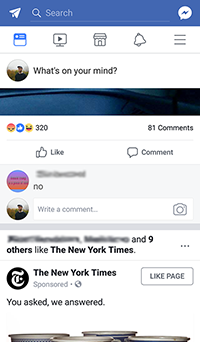
Facebook's Feed, formerly known as the News Feed, is a web feed feature for the social network. The feed is the primary system through which users are exposed to content posted on the network. Feed highlights information that includes profile changes, upcoming events, and birthdays, among other updates. Using a proprietary method, Facebook selects a handful of updates to show users every time they visit their feed, out of an average of 2,000 updates they can potentially receive. Over two billion people use Facebook every month, making the network's Feed the most viewed and most influential aspect of the news industry. The feature, introduced in 2006, was renamed "Feed" in 2022.
Facebook Stories are short user-generated photo or video collections that can be uploaded to the user's Facebook. Facebook Stories were created on March 28, 2017. They are considered a second news feed for the social media website. It is focused around Facebook's in-app camera which allows users to add fun filters and Snapchat-like lenses to their content as well as add visual geolocation tags to their photos and videos. The content is able to be posted publicly on the Facebook app for only 24 hours or can be sent as a direct message to a Facebook friend.
Algorithmic radicalization is the concept that recommender algorithms on popular social media sites such as YouTube and Facebook drive users toward progressively more extreme content over time, leading to them developing radicalized extremist political views. Algorithms record user interactions, from likes/dislikes to amount of time spent on posts, to generate endless media aimed to keep users engaged. Through echo chamber channels, the consumer is driven to be more polarized through preferences in media and self-confirmation.
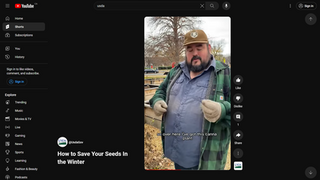
YouTube Shorts is the short-form section of the American video-sharing site YouTube. Shorts focuses on vertical videos that are less than 60 seconds of duration and various features for user interaction. As of May 2024, Shorts have collectively earned over 5 trillion views since the platform was made available to the public on July 13, 2021, which include video views that pre-date the YouTube Shorts feature. Creators earn money based on the amount of views they receive, or through ad revenue. The increased popularity of YouTube Shorts has led to concerns about addiction for teenagers.
